
Embark on an unforgettable journey with a Tour du Mont Blanc guided tour‚ offering breathtaking views of the Mont Blanc Massif while exploring France‚ Italy‚ and Switzerland with expert guides.
Overview of the Tour du Mont Blanc
The Tour du Mont Blanc is a 170km iconic trek circling the Mont Blanc Massif‚ spanning France‚ Italy‚ and Switzerland. This high-altitude journey offers stunning alpine landscapes‚ glaciers‚ and traditional mountain huts. Hikers experience diverse cultures‚ scenic valleys‚ and challenging terrain‚ with options for guided or self-guided tours. The route typically takes 7-10 days to complete‚ attracting adventurers seeking breathtaking views and unforgettable experiences in one of Europe’s most spectacular mountain regions.
History and Significance of the Route
The Tour du Mont Blanc was first completed in 1767‚ marking the beginning of alpine tourism. This iconic route has since become a symbol of mountain exploration‚ attracting thousands of hikers annually. Its significance lies in its cultural and natural heritage‚ offering a journey through three countries while showcasing the Mont Blanc Massif’s grandeur. The trail has evolved over centuries‚ blending tradition with modern trekking practices‚ making it a timeless adventure for outdoor enthusiasts seeking both challenge and inspiration in the heart of the Alps.
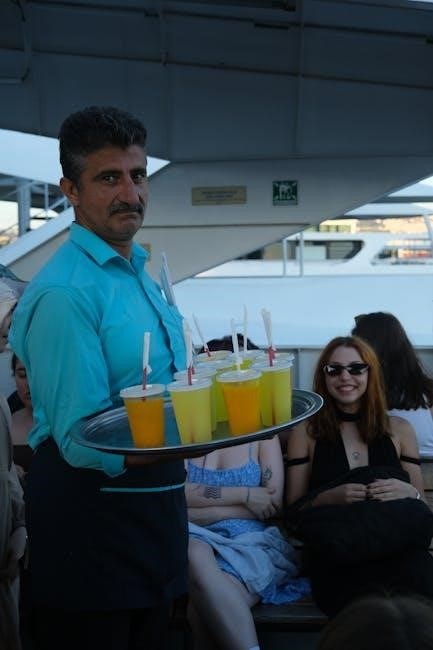
Key Highlights of the Tour
The Tour du Mont Blanc offers a comprehensive journey through breathtaking alpine landscapes‚ diverse cultures‚ and challenging trails‚ making it one of Europe’s most iconic and rewarding treks.
Scenic Beauty and Breathtaking Landscapes
The Tour du Mont Blanc captivates hikers with its stunning Alpine landscapes‚ offering views of towering peaks‚ pristine glaciers‚ and lush valleys. The 170 km trail winds through France‚ Italy‚ and Switzerland‚ showcasing dramatic vistas at every turn. Hikers are treated to rolling alpine meadows‚ crystal-clear mountain lakes‚ and iconic summits like the Mont Blanc Massif. The ever-changing scenery‚ from dense forests to high-altitude ridges‚ creates a visually diverse and inspiring experience‚ making it a true paradise for nature lovers and photographers alike.
Cultural and Historical Significance
The Tour du Mont Blanc is deeply rooted in history and culture‚ tracing paths used by Alpine villagers and traders for centuries. The route passes through ancient Roman roads and medieval settlements‚ showcasing the region’s rich heritage. Hikers encounter traditional Alpine villages‚ where local customs and cuisine highlight the diverse traditions of France‚ Italy‚ and Switzerland. Guided tours often include interactions with locals‚ offering insights into the region’s history and the significance of alpine pastures and mountain refuges‚ making the journey a cultural as well as a natural experience.
Physical and Mental Challenges
The Tour du Mont Blanc presents significant physical and mental challenges‚ with 170 km of rugged terrain‚ 10‚000 meters of elevation gain‚ and variable weather conditions. Hikers must navigate high passes‚ steep descents‚ and glacier crossings‚ requiring strong endurance and agility. Mentally‚ the demanding itinerary and unpredictable Alpine weather test resolve and adaptability. Participants need to be in excellent physical shape and prepared for long‚ strenuous days. The journey demands resilience‚ focus‚ and determination‚ making it a true test of both body and mind for even experienced hikers.
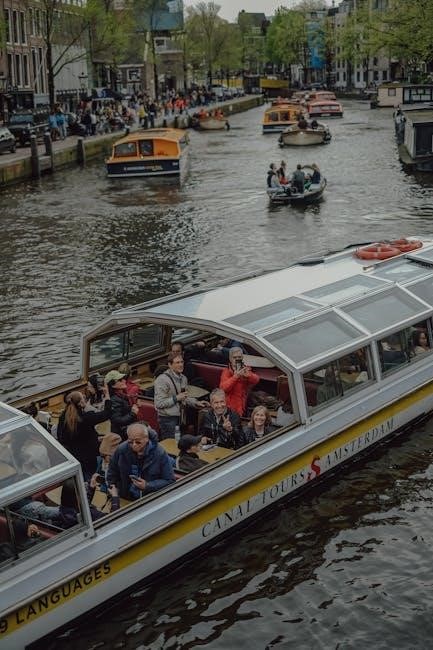
Guided vs. Self-Guided Tours
Both guided and self-guided Tours du Mont Blanc are popular‚ offering unique experiences. Guided tours provide expert support‚ logistics‚ and navigation‚ while self-guided options offer flexibility and independence.
Benefits of a Guided Tour
A guided Tour du Mont Blanc offers unparalleled support and expertise. Experienced guides handle logistics‚ navigation‚ and safety‚ allowing you to focus on the breathtaking scenery. They provide deep insights into the region’s history‚ culture‚ and environment‚ enhancing your overall experience. Guided tours also ensure access to the best accommodations and dining options. With expert leadership‚ you can tackle challenging terrain confidently‚ knowing help is always available. This option is ideal for those seeking a stress-free‚ immersive adventure with like-minded travelers.
How Guided Tours are Organized
Guided Tour du Mont Blanc tours are meticulously planned‚ typically spanning 7 days and covering the classic route through France‚ Italy‚ and Switzerland. Small groups‚ led by experienced mountain guides‚ ensure personalized attention and safety. Tours often start in Les Houches and end in Chamonix‚ with daily hikes averaging 6-8 hours. Logistics‚ including accommodations‚ meals‚ and luggage transfers‚ are pre-arranged‚ allowing hikers to focus on the trail. Guides provide historical insights‚ navigate challenging terrain‚ and manage emergencies‚ ensuring a seamless and enriching experience for all participants.
Best Companies Offering Guided Tours
Several reputable companies specialize in organizing Tour du Mont Blanc guided tours‚ offering expert guidance and seamless logistics. Alpenwild stands out for its luxurious accommodations and gourmet cuisine‚ while Explore Worldwide provides a mix of hiking and cultural immersion. Mont Blanc Treks offers flexible itineraries tailored to diverse preferences‚ ensuring a personalized experience. These companies employ certified mountain guides‚ guaranteeing safety and deep knowledge of the region. They handle everything from accommodation bookings to luggage transfers‚ allowing hikers to fully immerse themselves in the breathtaking Alpine landscapes.
Itinerary and Route Details
Experience a 7-day Tour du Mont Blanc journey circling the Mont Blanc Massif through France‚ Italy‚ and Switzerland. Covering 105 miles with 33‚000ft elevation gain‚ this guided tour offers daily hikes‚ stunning alpine views‚ and seamless logistics‚ including luggage transfers and overnight stays in mountain refuges or charming hotels.
Classic 7-Day Itinerary
Discover the Tour du Mont Blanc on a 7-day guided journey‚ starting in Les Houches and ending in Chamonix. Each day offers 6-8 hours of hiking‚ exploring France‚ Italy‚ and Switzerland. Day 1 begins with a hike to Trient‚ followed by Champex on Day 2‚ with breathtaking views of alpine meadows and glaciers. The route includes iconic stops like La Fouly and Courmayeur‚ blending challenging terrain with picturesque landscapes. Overnight stays in charming mountain huts or hotels provide comfort and local charm‚ while luggage transfers ensure a seamless experience. This itinerary combines stunning scenery‚ cultural encounters‚ and physical achievement‚ making it a memorable adventure.
High-Level Route and Glacier Crossings
The high-level route of the Tour du Mont Blanc offers thrilling challenges‚ including glacier crossings and high-altitude passes. Notable sections like the Fenêtre d’Arpette and Col du Balme provide breathtaking views but demand careful navigation. Glacier crossings require crampons and ice axes‚ with guides ensuring safety. These technical sections are a testament to the tour’s alpine nature‚ offering hikers a sense of achievement amidst the stunning backdrop of Mont Blanc’s glaciers and towering peaks.
Alternative Routes and Variations
For those seeking flexibility‚ the Tour du Mont Blanc offers alternative routes and variations to suit different preferences and skill levels. Hikers can opt for shorter segments‚ such as the eastern or western loops‚ or explore lesser-known valleys. The Fenêtre d’Arpette route provides a challenging yet scenic detour‚ while other variations allow hikers to avoid crowded trails. These options maintain the tour’s iconic beauty while offering unique experiences‚ ensuring a personalized adventure through the Mont Blanc Massif. Guided tours often include these alternatives to cater to diverse interests and abilities.
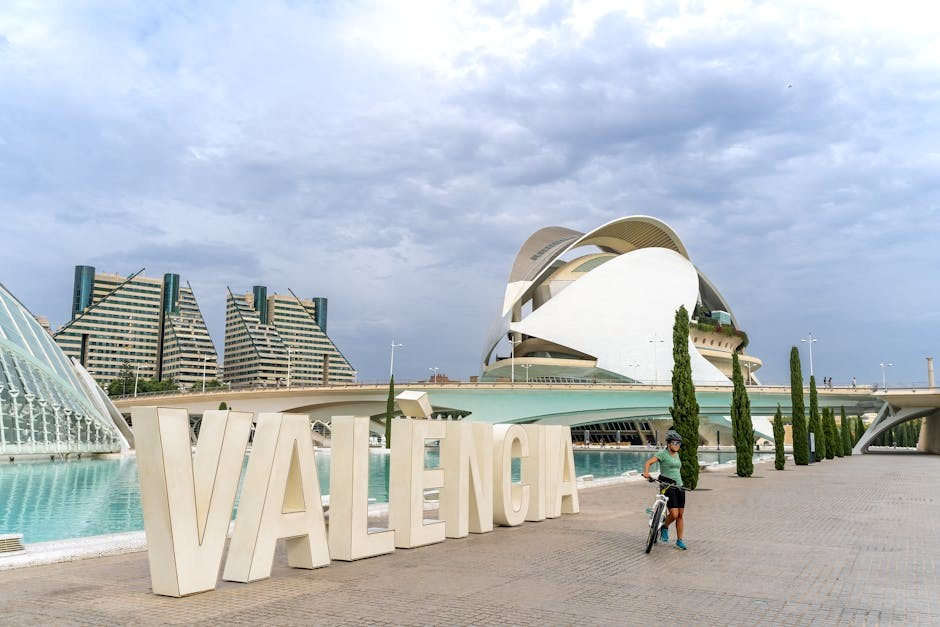
Preparation and Planning
Thorough preparation is key for the Tour du Mont Blanc. Plan your itinerary‚ secure accommodations‚ and obtain necessary permits. Use detailed maps like IGN 3630 and guides to navigate the route effectively. Organize logistics‚ including luggage transfers and shuttle services‚ to ensure a smooth journey. Guided tours often handle these arrangements‚ allowing hikers to focus on the experience while experts manage the details.
Essential Gear and Equipment
Proper gear is vital for the Tour du Mont Blanc. Hikers should pack sturdy hiking boots‚ trekking poles‚ and layered clothing for varying weather conditions. Include a waterproof jacket‚ insulated layers‚ and breathable base layers. A backpack with rain cover‚ headlamp‚ and extra batteries are essential. Don’t forget a first-aid kit‚ water bottle or hydration bladder‚ and water purification tablets. Navigation tools like the IGN 3630 map and a compass are crucial. Guided tours often provide equipment lists to ensure hikers are well-prepared for the challenge.
Physical Training and Fitness Requirements
The Tour du Mont Blanc is a challenging trek requiring a strong physical condition. Hikers should be prepared for 6-8 hours of hiking daily‚ with significant elevation gains and descents. Building cardiovascular endurance and muscular strength through regular exercise is essential. Focus on activities like hiking‚ cycling‚ or running to improve stamina. Incorporate strength training for legs and core to handle uneven terrain and heavy backpacks. Aim to acclimate to high-altitude conditions and practice hiking with a loaded pack to simulate the trek’s demands.
Maps‚ Guides‚ and Navigation Tools
Essential tools for the Tour du Mont Blanc include detailed maps like IGN 3630 Chamonix Mont Blanc and IGN 3531 St Gervais. The Cicerone guidebook provides comprehensive route details. GPS apps and digital tools are highly recommended for navigation‚ offering real-time tracking and waypoints. Always carry a compass and paper maps as backups. Guides often use these resources to ensure safe and efficient trekking. Proper navigation aids are crucial for tackling the route’s complex terrain and varying conditions.
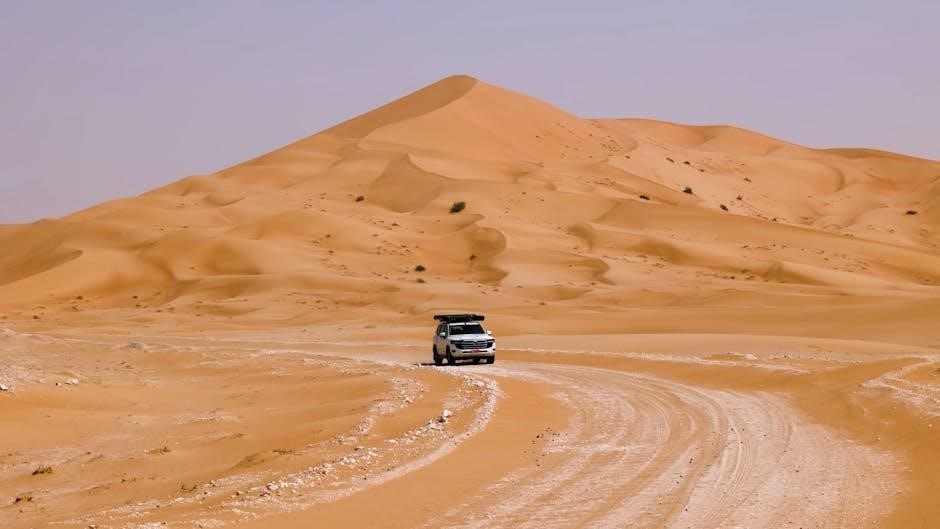
Accommodation and Logistics
Stay in charming mountain huts‚ refuges‚ or cozy hotels‚ with luggage transfers and shuttle services ensuring a smooth journey throughout the Tour du Mont Blanc trek.
Mountain Huts and Refuges
The Tour du Mont Blanc offers charming mountain huts and refuges‚ providing rustic charm and stunning views. These accommodations are simple yet welcoming‚ offering basic amenities and hearty meals. Located in remote alpine landscapes‚ they serve as ideal retreats after a day’s hike. Many huts are family-run‚ offering a glimpse into local culture and hospitality. While private rooms are limited‚ shared spaces foster camaraderie among hikers. Staying in these huts is an integral part of the authentic trekking experience‚ blending adventure with alpine tradition.
Hotel and Lodge Options
For those preferring more comfort‚ the Tour du Mont Blanc offers a variety of hotel and lodge options. These accommodations range from charming alpine lodges to luxury hotels‚ many located in picturesque villages. They provide en-suite rooms‚ fine dining‚ and wellness facilities‚ blending alpine charm with modern comforts. Hotels and lodges are strategically placed along the route‚ ensuring easy access to trailheads. This option is ideal for trekkers seeking relaxation and amenities after a day of hiking‚ with luggage transfers often included for convenience.
Luggage Transfers and Shuttle Services
Luggage transfers and shuttle services simplify the Tour du Mont Blanc experience‚ allowing hikers to travel light. Companies offer daily transfers‚ moving luggage between accommodations while trekkers enjoy the trail. Shuttles provide convenient transport between key destinations‚ such as Geneva‚ Chamonix‚ and Les Houches. These services ensure a seamless journey‚ letting hikers focus on the stunning alpine scenery and trails without logistical worries. They are particularly beneficial for self-guided tours‚ offering flexibility and support throughout the adventure.

Cultural and Culinary Experiences
Discover the rich cultural heritage and savor local cuisine during the Tour du Mont Blanc. Enjoy traditional dishes‚ interact with local communities‚ and explore cultural landmarks along the route.
Local Cuisine and Traditional Dishes
Indulge in the flavors of the Alps during the Tour du Mont Blanc. Savor local specialties like tartiflette‚ raclette‚ and fondue‚ crafted with fresh mountain ingredients. Enjoy hearty dishes such as polenta and cured meats‚ reflecting the culinary traditions of France‚ Italy‚ and Switzerland. The region’s renowned cheeses‚ like Beaufort and Tomme‚ are a delight. These authentic meals‚ often served in charming mountain refuges‚ provide the perfect refreshment after a day of hiking‚ blending culture and cuisine in a truly unforgettable experience.
Interacting with Local Communities
Engaging with local communities enriches your Tour du Mont Blanc experience. Village stops offer chances to meet residents and learn about Alpine traditions. Local guides often share stories and facilitate interactions‚ deepening cultural connections. Many refuges and inns are family-run‚ providing authentic insights into mountain life. Participating in local festivals or events adds a unique dimension to your journey‚ fostering memorable encounters and a deeper appreciation for the region’s heritage and way of life.
Cultural Landmarks and Historical Sites
The Tour du Mont Blanc route is dotted with cultural and historical landmarks‚ offering a glimpse into the region’s rich Alpine heritage. Hikers can explore ancient Roman roads‚ traditional Alpine villages‚ and iconic chapels like the Chapelle de la Gruvaz. Historical sites such as Pont d’Arve and the remains of medieval hamlets provide a deeper connection to the region’s past. Guided tours often include stops at these landmarks‚ allowing participants to absorb the cultural and historical significance of the Mont Blanc region‚ enhancing their hiking experience with stories and insights from expert guides.
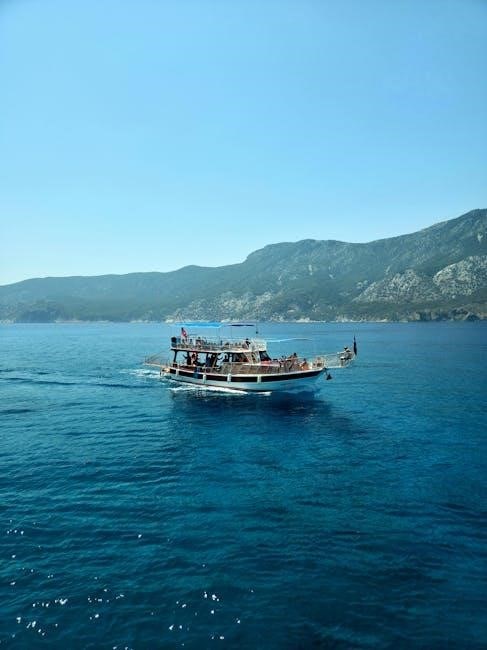
Environmental Considerations
Hiking the Tour du Mont Blanc requires eco-friendly practices to preserve the fragile Alpine ecosystem. Guided tours emphasize minimizing waste and respecting protected areas to ensure sustainability for future generations.
Impact of Tourism on the Mont Blanc Region
The popularity of the Tour du Mont Blanc has led to increased tourism‚ placing pressure on the region’s infrastructure and natural environments. While tourism boosts local economies‚ it also strains resources and threatens biodiversity. Overcrowding during peak seasons‚ particularly during events like the Ultra Tour du Mont Blanc‚ exacerbates these issues. Guided tours play a crucial role in promoting sustainable practices‚ such as waste reduction and trail preservation‚ ensuring the region’s beauty endures for future generations while supporting local conservation initiatives.
Best Practices for Eco-Friendly Hiking
Minimizing your environmental footprint is essential while hiking the Tour du Mont Blanc. Stay on designated trails to avoid eroding sensitive habitats and respect protected areas. Carry all waste‚ including food wrappers and toilet paper‚ and dispose of it properly in designated bins. Avoid disturbing wildlife and their habitats‚ especially in alpine meadows. Use reusable water bottles and containers to reduce plastic waste. Consider joining guided tours that emphasize eco-friendly practices‚ as they often provide expertise in maintaining the region’s pristine natural beauty and promoting sustainable tourism.
Local Conservation Efforts
The Mont Blanc region is home to numerous conservation initiatives aimed at protecting its fragile alpine ecosystem. Local authorities and NGOs collaborate to implement reforestation projects‚ monitor wildlife‚ and maintain pristine trails. Efforts focus on reducing waste‚ preventing erosion‚ and safeguarding biodiversity. Guided tours often support these initiatives by promoting sustainable practices and educating hikers about environmental stewardship. These collective efforts ensure the Mont Blanc Massif remains a pristine destination for future generations while balancing tourism with ecological preservation.
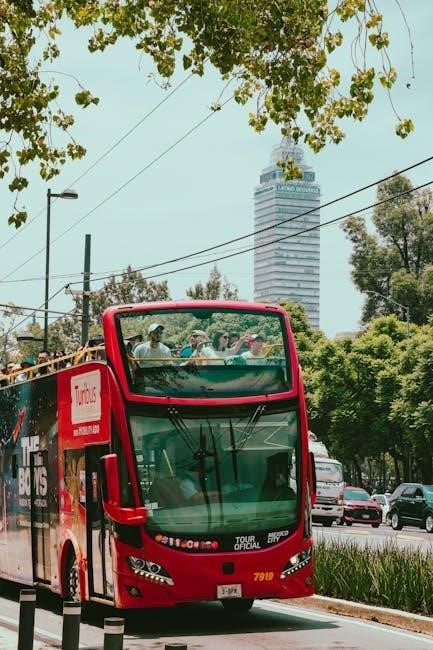
Weather and Climate
The best time to hike the Tour du Mont Blanc is from mid-June to September‚ with mild temperatures and minimal snow. Alpine weather can be unpredictable‚ with sudden changes in conditions‚ especially at higher altitudes‚ where winds and cooler temperatures are common.
Best Time to Hike the Tour du Mont Blanc
The optimal time to hike the Tour du Mont Blanc is from mid-June to September‚ offering stable weather and wildflower-filled meadows. Peak season (July-August) provides long days and accessible trails but comes with larger crowds and higher costs. For fewer hikers‚ consider the shoulder season in late June or early September‚ when temperatures remain pleasant. Avoid the Ultra Tour du Mont Blanc event in late August‚ as it attracts thousands‚ impacting trail conditions and availability.
Understanding Alpine Weather Conditions
Alpine weather is notoriously unpredictable‚ with conditions changing rapidly due to the region’s unique microclimates. Hikers may encounter everything from clear skies to sudden snowstorms‚ even in summer. The föhn wind can bring unexpected warmth‚ while shaded slopes may retain ice patches. Be prepared for dramatic temperature swings and potential rain‚ especially in the afternoons. Always carry layers‚ waterproof gear‚ and monitor weather forecasts closely to stay safe on the trail.
Preparing for Variable Climate Zones
The Tour du Mont Blanc traverses diverse climate zones‚ from lush valleys to high-altitude alpine environments. Be prepared for dramatic temperature fluctuations‚ with warm days giving way to cold nights. Rain and snow are possible‚ even in summer‚ so waterproof gear and layers are essential. Altitude affects weather patterns‚ with stronger winds and cooler temperatures at higher elevations. Proper footwear and trekking poles are vital for icy or wet terrain. Always check forecasts and carry a map to navigate unpredictable conditions effectively.
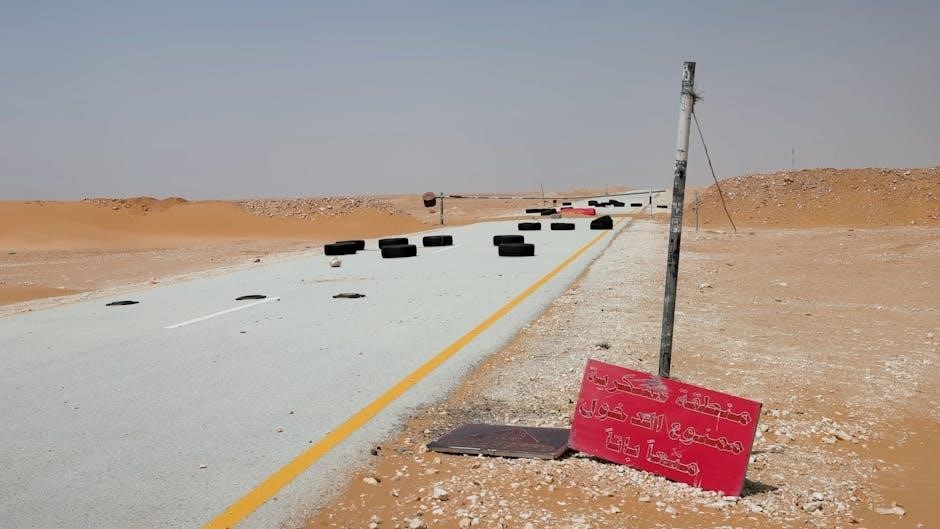
Safety and Emergency Procedures
Ensure safety with experienced guides‚ emergency response plans‚ and proper gear. Carry a first-aid kit‚ navigation tools‚ and a communication device for alpine environments.
Common Hazards and Risks
The Tour du Mont Blanc presents several hazards‚ including unpredictable alpine weather‚ steep terrain‚ and glacier crossings. Sudden snowstorms and icy paths can be treacherous‚ while high altitudes increase the risk of altitude sickness. Overcrowding during peak seasons‚ especially near popular landmarks‚ can elevate accident risks. Additionally‚ unstable trail conditions and potential rockfall require constant vigilance. To mitigate these risks‚ hikers should stay informed about weather conditions‚ use proper gear‚ and consider joining a guided tour for expert navigation and safety. Ensuring all hikers are well-prepared and equipped is crucial for a safe experience.
Emergency Response and Rescue Services
In case of emergencies on the Tour du Mont Blanc‚ rescue services are readily available but often require advance planning. Mountain guides are trained to handle critical situations and can summon help quickly. Helicopter evacuations are common for severe injuries or altitude sickness. Hikers should carry a phone with emergency numbers like 112 and inform guides or local authorities of their itinerary. Weather-related risks may delay rescues‚ emphasizing the importance of staying prepared and aware of conditions. Always hike with a guide or group for added safety and quicker response times in emergencies.
Importance of Mountain Guides
Mountain guides are essential for a safe and enjoyable Tour du Mont Blanc experience. They possess deep knowledge of the trail‚ weather conditions‚ and potential hazards‚ ensuring hikers navigate challenging terrain confidently. Guides are trained to handle emergencies‚ providing critical assistance in case of injuries or sudden changes in conditions. Their expertise also enhances the trek by sharing insights into the region’s history‚ culture‚ and wildlife. With a guide‚ hikers can focus on the breathtaking scenery while leaving logistics and safety concerns in professional hands‚ making the journey more rewarding and stress-free.
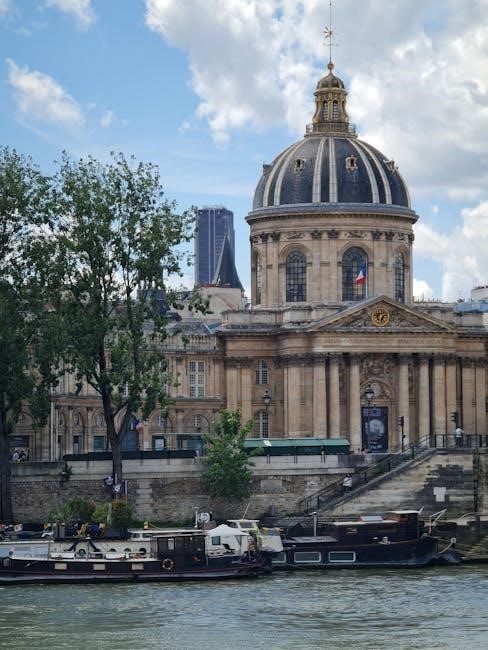
Special Events and Activities
Experience the Ultra Tour du Mont Blanc‚ a premier trail running event‚ or join guided themed tours and workshops. Seasonal festivals celebrate Alpine culture and outdoor adventures.
These unique experiences enhance your journey‚ offering unforgettable moments amidst breathtaking landscapes and vibrant local traditions.
Annual Ultra Tour du Mont Blanc Event
The Ultra Tour du Mont Blanc is a prestigious trail running event that draws athletes worldwide. Held annually‚ typically in late August‚ it challenges participants to cover over 170km of rugged terrain‚ including 10‚000m of elevation gain. The event coincides with increased activity in Chamonix‚ making it a vibrant yet crowded period. Participants test their endurance‚ while spectators enjoy the electrifying atmosphere. This iconic race is a celebration of human resilience and the breathtaking beauty of the Mont Blanc Massif.
Guided Themed Tours and Workshops
Enhance your Tour du Mont Blanc experience with themed guided tours and workshops. These specialized programs offer unique perspectives‚ such as culinary journeys‚ photography sessions‚ or cultural deep-dives. Expert guides lead participants through tailored itineraries‚ combining hiking with hands-on experiences like cheese tastings or visits to historical Alpine sites. Workshops may focus on wilderness skills‚ mountain safety‚ or environmental awareness. These themed tours allow hikers to connect more deeply with the region’s heritage and landscapes‚ creating memorable and enriching experiences beyond the standard trek.
Seasonal Festivals and Celebrations
The Tour du Mont Blanc region comes alive with vibrant seasonal festivals and celebrations. In summer‚ Alpine villages host cultural events‚ showcasing local traditions‚ music‚ and cuisine. Hikers can experience the lively atmosphere of these gatherings‚ often coinciding with the trekking season. Winter brings festive markets and snow-themed celebrations‚ adding charm to the Mont Blanc landscape. These events offer a unique opportunity to immerse oneself in the local culture‚ enhancing the overall hiking experience with memorable encounters and celebrations.
Completing the Tour du Mont Blanc guided tour is an unforgettable experience‚ blending stunning alpine landscapes‚ cultural richness‚ and personal achievement. It leaves hikers with lifelong memories.
Final Tips for a Successful Tour
For a successful Tour du Mont Blanc‚ ensure proper physical conditioning and pack essential gear. Use detailed maps and guides to navigate the route effectively. Choose a reputable guide or tour operator to enhance safety and enjoyment. Respect local environments and wildlife by adhering to eco-friendly practices. Stay flexible with your itinerary to accommodate unpredictable alpine weather. Engage with local cultures and communities to enrich your experience. Finally‚ embrace the challenge with a positive mindset and cherish the breathtaking landscapes that make this trek unforgettable.
Long-Term Memories and Personal Growth
The Tour du Mont Blanc guided tour is more than a trek; it’s a transformative journey that leaves lasting memories and fosters personal growth. The challenge of navigating breathtaking landscapes while overcoming physical and mental obstacles builds resilience and confidence. Participants often reflect on the experience as a life-changing adventure‚ where the bonds formed with fellow hikers and the connection with nature create enduring memories. This trek is not just about reaching destinations but about discovering inner strength and embracing the beauty of self-discovery.